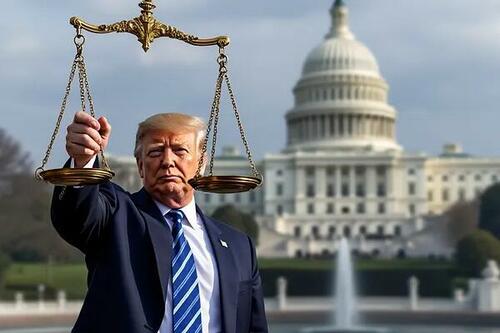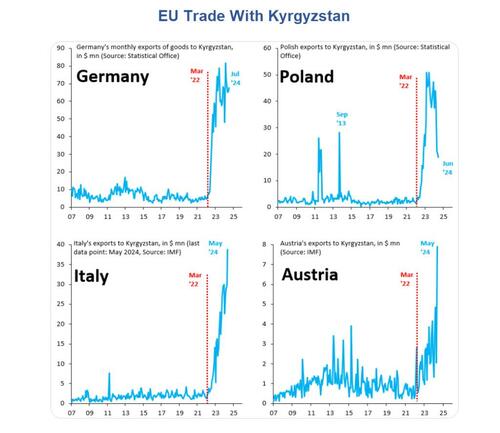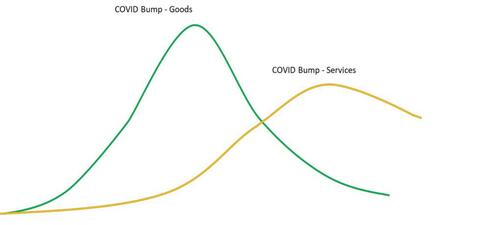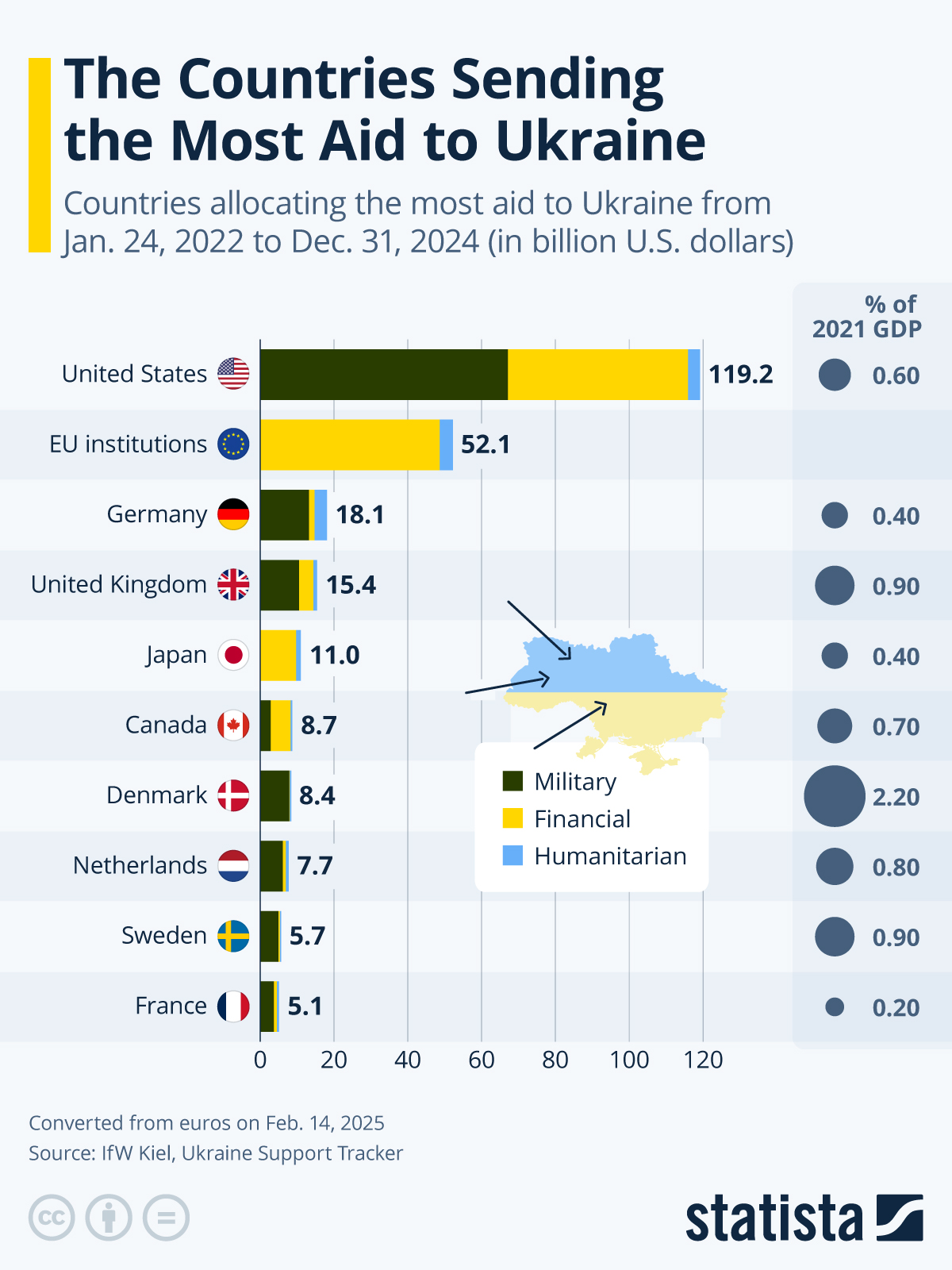Authored by Jeff Carlson and Hans Mahncke via Truth Over News,
It may be premature to start contemplating the implications of a potential Trump victory on November 5. Unfortunately, for certain issues, it may already be too late. This is because time is of the essence when it comes to holding individuals accountable for the numerous frauds and acts of treachery that characterized much of President Trump’s first four years in office.

More specifically, federal law has a five-year statute of limitations, preventing prosecution for actions committed more than five years ago. However, urgent accountability is needed to ensure that those who defrauded the American public in their pursuit of Trump do not escape punishment.
Democrats and their allies are acutely aware of the five-year time limit. This is evident in their swift action to prosecute Twitter user Douglas Mackey for creating a meme in 2016 that jokingly encouraged Hillary Clinton voters to text in their votes. As the statute of limitations on Mackey’s “crimes” was set to lapse in 2021, Democrats, aided by “Republican” appointee Seth DuCharme, were locked and loaded to file charges as soon as Biden assumed the presidency.
Republicans would do well do follow this example, albeit for actual crimes. Accountability is needed in order to prevent renewed and repeated treachery.
We have examined aspects of three separate scams that may still fall within the five-year statute of limitations period by the time Trump assumes office on January 20, 2025, should he win the election.
Russiagate
The first area we examined is Russiagate, which, given that it is now almost nine years old, presents unique challenges in terms of holding anyone accountable. Russiagate originated as a Clinton campaign operation in early 2016. Of course, a dirty tricks campaign is not a crime in itself. Even lying to the media, as the Clinton campaign did repeatedly in its attempts to smear Trump as a Russian agent, is not a crime.
Instead, our focus is on government actors. The first documented instance of government actors co-opting the Russiagate narrative occurred when the FBI received the fraudulent Steele dossier on July 5, 2016. This was soon followed by various other actions, such as opening the sham Crossfire Hurricane investigation and spying on several members of the Trump campaign team. However, all these actions are now over eight years old and fall outside the statute of limitations. Unfortunately, even the most egregious aspect of the Russiagate hoax—the fraudulent Intelligence Community Assessment that President Obama used to undermine the incoming Trump administration—also falls outside the statute of limitations. Subsequent actions involving corrupt FBI officials, such as Peter Strzok, James Comey, and Andrew McCabe, likewise fall outside the statute of limitations. In fact, all these individuals were fired more than five years ago.
However, there is one aspect of Russiagate that does not fall outside the five-year period: Igor Danchenko, the alleged primary source of the Steele dossier, who was identified by a group of Twitter users in July 2020. This means that the FBI’s actions concerning Danchenko—such as concealing his existence from congressional and other investigations, as well as hiding the fact that he had disavowed the fraudulent Steele dossier—may still fall within the statute of limitations.
Now, some may argue that Danchenko has already been prosecuted by Special Counsel John Durham in a case that suffered from numerous defects. While this is true, unlike Durham, we are not focusing on private individuals but rather on those within the government who undermined Trump. Incidentally, this was originally supposed to be Durham’s task, however, he inexplicably abandoned it.
There remains a possibility of pursuing corrupt FBI officials regarding any actions they may have taken with respect to concealing facts in connection with Danchenko. Put another way, Danchenko must be the focal point, as he was still being concealed by the FBI during the first half of 2020, a period for which the five-year statute of limitations has not yet expired.
Holding officials accountable for their actions regarding Danchenko is, of course, small potatoes in the broader context of Russiagate. This failure is largely attributable to Trump’s hopeless first Attorney General, Jeff Sessions, as well as the scheming of his second Attorney General, Bill Barr. However, lamenting over past mistakes serves no purpose. If the goal is to salvage as much as possible, and if FBI officials can be held accountable, even at this late stage, it would at least offer a small consolation on which to conclude the entire Russiagate affair.
If this were to happen, it would need to happen very swiftly. On his first day in office, Trump would need to assign a team to sift through all records related to Danchenko in search of instances in 2020 where officials covered up matters pertaining to Danchenko and his Russiagate confessions.
Ukraine Impeachment Hoax
It is not coincidental that Trump’s first impeachment, on charges of allegedly failing to send weapons to Ukraine, began one day after Robert Mueller testified before Congress that there was no Russian collusion. One hoax simply replaced another.
On July 25, 2019, Trump had his infamous conversation with Ukraine’s President, Volodymyr Zelensky. The overarching premise of the impeachment scheme was to accuse Trump of withholding military aid to Ukraine, despite the fact that he had not done so. This allegation stemmed from a distorted interpretation of Trump’s phone call with Zelensky. It was claimed that Trump had offered a quid pro quo, suggesting that Zelensky investigate alleged corruption involving the Biden family in exchange for military assistance. However, when the actual transcript of the phone call was released in September 2019, it became clear that this characterization was false. Nevertheless, by that time, the impeachment narrative against Trump was already in full swing, and neither the Democrats nor the media were deterred by the truth.
The Ukraine impeachment saga involved numerous individuals who testified before Congress, many of whom misrepresented the truth about Trump and about Biden corruption. At this point, it may be worth noting that lying in an official capacity within the jurisdiction of the government can include telling half-truths or concealing the truth. Some individuals who testified during the 2019 impeachment hearings, including Obama’s energy czar, Amos Hochstein, were well aware of the problem of Biden corruption in Ukraine. Did they report this to the impeachment inquiry? Geoffrey Pyatt, the Ambassador in Kyiv, assisted in drafting talking points to divert attention from Biden’s corruption in Ukraine. Was this information concealed from the inquiry? The chargé d’affaires at the Embassy in Kyiv, George “Bow Tie” Kent, was aware that Hunter Biden’s firm, Burisma, had bribed the Ukrainian prosecutor’s office. Why was this information withheld from the inquiry?
We could delve deeper into this, but all of this transpired in 2019, and by the time we reach January 2025, the lies told—and truths concealed—during the impeachment investigation will fall outside the statute of limitations. Therefore, there is only a very narrow window that remains open, specifically regarding Trump’s Senate trial which took place from January 16 to February 5, 2020. (As a side note, it is more than ironic that while all this was occurring, another faction of the anti-Trump coalition, specifically bureaucrats led by Anthony Fauci, were concealing the fact that a deadly virus had been released from a laboratory.)
Thus, if there were to be any accountability for the Ukraine impeachment, it would likely need to focus on the events surrounding the impeachment trial. However, there are two major problems. First, the timeline is very tight. The first part of the Senate trial would already fall outside the five-year limitation period by the time Trump potentially assumes office. Second, and more importantly, the Senate ultimately decided not to call any witnesses. Lindsey Graham, apparently unironically, insisted that calling witnesses, such as Hunter Biden, would interfere with the 2020 election. Had witnesses been called, we would have gotten to the truth much sooner, and there would also now be a much greater opportunity to hold individuals accountable.
This leaves us with only a slim opportunity to pursue individuals for any actions they took after the impeachment trial. We would no longer be examining the lies themselves, but rather the efforts to conceal those lies afterward. In other words, actions taken to cover up the truth, even after Trump’s Senate trial concluded, would reset the statute of limitations, allowing for the prosecution of those involved. For instance, did anyone within the government work to conceal the truth about what Pyatt and Kent knew regarding Burisma? Were Freedom of Information (FOIA) efforts obstructed? We do not know the answers, but this is where our focus would be directed.
In sum, among all the hoaxes perpetrated against Trump, given the numerous limitations and obstacles, this is likely the one with the least prospect of holding anyone accountable at this stage.
Covid Origin Cover Up
Third, there is the Covid cover-up. No one has been held accountable for the Covid response, or for concealing the origin of the virus, despite 20 million deaths and at least $30 trillion in damages. In fact, there hasn’t even been any investigation or commission examining what went wrong, which seems very surprising given the immense human and financial toll incurred. A commission of inquiry can, of course, be established at any time. For all we know, this could occur 100 years from now. However, regarding actual legal liability, the five-year rule applies. Given that most of the events unfolded in 2020, there is only a very small window of opportunity to hold individuals accountable. However, unlike in the other two hoaxes, there is still time.
What would accountability look like? Who would be held accountable, and for what? It could be argued that decisions made by the government—such as unlawful mandates, lockdowns, and people being fired for refusing the “vaccine”—should not be subject to criminal penalties, given the novelty of the virus and the likely justification that officials were doing their best under the circumstances. While we do not agree with such excuses, they are likely to carry some weight in any legal proceeding and the prospect of holding officials accountable for the Covid response is extremely slim.
Another factor contributing to this conclusion is that politicians and public health officials were significantly misled by a small group of corrupt individuals led by Anthony Fauci. While this does not excuse violations of civil liberties, those who implemented mitigation measures—such as isolation, social distancing, contact tracing, shutting of businesses, and similar strategies—might argue that these approaches had been effective against previous viruses. This is the crux of the matter. Although mitigation measures may have arguably had some effect in the past, they were never going to be effective against Covid, a virus that had been engineered in a laboratory to infect human cells and facilitate human-to-human transmission. This fundamentally altered the entire landscape of the response. While the original SARS virus was poorly adapted for human transmission—resulting in only 774 deaths worldwide, with no fatalities in the United States—Covid was doing the exact opposite. (The majority of deaths during the 1918-1919 influenza pandemic were caused by secondary bacterial infections, for which there was no effective treatment at the time, rather than directly from the influenza virus.)
Thus, Covid mitigation measures were entirely ineffective from the outset, a fact of which Fauci was well aware. The damage and human suffering caused by these ineffective countermeasures are incalculable, and it all transpired because Fauci and a small group of U.S. government officials concealed the true nature of Covid. Had this not occurred, the country could have been spared lockdowns and numerous other injustices. At worst, the Swedish model would have been adopted, allowing schools and businesses to remain open. Furthermore, Trump could not have been blamed for a poor response to the virus if the public had understood that it was destined to spread through the population. He would most likely have been easily re-elected.
Fauci’s lies altered the course of history. Therefore, we argue that the most appropriate and effective means of ensuring accountability for Covid is to pursue Fauci and his group of collaborators. To clarify, we are not addressing Fauci’s involvement in the creation of the virus at the Wuhan lab; that is a separate and legally distinct matter. Currently, our focus is solely on Fauci’s efforts to conceal the origin of the virus, actions that have caused immense harm.
Specifically, Fauci ought to be held accountable for concealing the truth from President Trump and from the Coronavirus Taskforce, to which he was appointed on January 29, 2020.
Two days earlier, on January 27, Fauci’s office received an email from Peter Daszak, the man through whom Fauci was funding the Wuhan lab. The email’s subject line was “Wuhan novel coronavirus – NIAIDs role in bat-origin CoVs.”
The body of Daszak’s email provided Fauci with talking points to deflect attention from Fauci’s collaboration with the Wuhan lab. At the time of Daszak’s warning, there had not been any public reporting of the link between Fauci and the Wuhan lab.
On January 31, Fauci was informed by a group of virologists that the Covid virus looked like it had been engineered in a lab. However, instead of reporting this information to President Trump and the Covid Task Force, Fauci initiated a cover-up. One of his actions to maintain this cover-up involved persuading the scientists who had discovered evidence of engineering—and who relied on funding from Fauci’s NIAID—to write a paper dismissing any theories regarding a laboratory origin. They complied, with Fauci overseeing the process.
Fauci had a responsibility to inform the Task Force of his knowledge regarding the virus. Instead, he misled the Task Force and concealed critical information, fostering a deceptive narrative about the virus’s natural origin and falsely assuring President Trump that the virus posed no threat to the United States.
On February 3, when Kelvin Droegemeier, the White House Director of Science and Technology Policy, requested information regarding the origins of the pandemic, Fauci and his hand-picked team of scientists responded by pushing the fraudulent natural origin narrative. This, too, constitutes concealment of material facts.
On April 17, while standing at the White House podium alongside Trump, Fauci presented the fraudulent paper which he had commissioned as irrefutable evidence that the virus originated in nature. Fauci did not disclose his involvement in the creation of the paper. Astonishingly, he even asserted that he was unaware of the authors, despite the fact that he both knew and funded them.
Fauci’s statements on April 17 provide clear evidence of guilt and of a cover-up. Furthermore, since his actions will not lapse until April 16, 2025, there is time to hold him and his collaborators accountable for them.
Unlike the Russiagate scam and the Ukraine impeachment hoax, the cover-up surrounding the origins of Covid presents the most viable avenue for holding government officials accountable for their treachery, and for ruining Trump’s first term. However, the window of opportunity for accountability is quite narrow and will necessitate prompt action if and when Trump assumes office.










